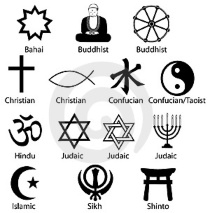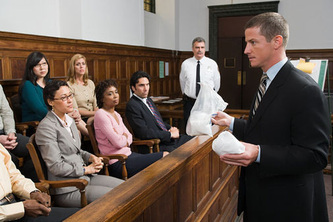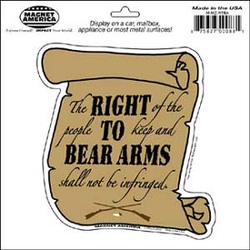What is the Judical Branch?
The judical branch is the part of government that interperts the laws. It mainly consists of the court systems.
Types of Laws
Common Laws

A common law is a law that is either based on common sense or on tradition. For example there might not be a law against egging someone's house, however if you get caught you might get fined.
Statutory Laws

A statutory law is a law that is passed by a law making body. They are the laws that usually pop into a person's head, like murder, stealing, rape, speeding, etc.
Constitutional Laws
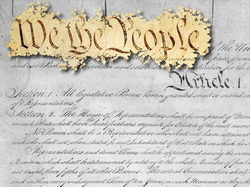
Constitutional laws are the laws that are based on the consitution. Meaning that we have a right to bear arms, we have the freedom of press, right to not house soldiers, etc.
Administrative Laws

An administrative law is a law that is made by a government agency. So for example the DNR is in control of how many walleyes that you can catch in the Wolf River.
The Structure of the Federal Courts
The federal courts goes from the District Courts to the Appeals Courts to the Supreme Court. The way that a case moves up is if your case keeps getting appealed, then you can go to the next highest court system.
District Courts
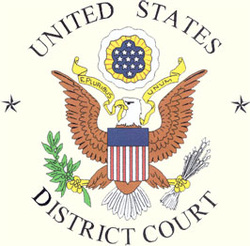
A District Court is the lowest type of court in the federal court system. There are 94 District Courts in the United States. They are trial courts, meaning that you get a judge, jury, lawyer, etc. The case that are tried in the District Courts hear a lot of differing issues.
Appeals Courts
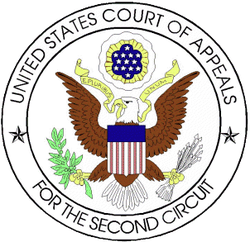
There are 13 Appeals Court in the United States. They consist of a panel of judges. There are usually 3-7 judges on a panel. They are not a trial court, they hear your case to decide if the previous trial or judge made an error in your case. They do bot determine if someone is guilty or innocent.
Supreme Court
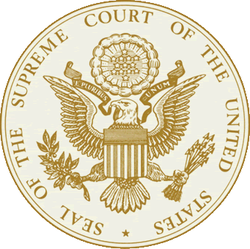
This is the highest form of court in the United States. It consists of 1 chief justice and 8 associate justices. They hear cases from the State Supreme Court and hear appeals from the Appeals Court. The 9 justice sit at a table and ask questions of the prosecuting and defense.
The Supreme Court can either agree with the lower courts decision on a case, or remand it, meaning send it back to the trial court.
All of the justices are appointed by a president and for life, meaning they either have to resign, die or be imeached.
The Supreme Court can either agree with the lower courts decision on a case, or remand it, meaning send it back to the trial court.
All of the justices are appointed by a president and for life, meaning they either have to resign, die or be imeached.
Types of Cases tried in Federal Court
- Violating the US constituion
ie.) if someone was to be punished for something they said in a newspaper then it would violate their right to freedom of speech and freedom of press. So that person who's rights were violated could take their case to federal court.
- Violating a US treaty
- Someone suing someone from a different state - this is the most common!
ie.) if you were in an accident in California but live in Washington, and you wanted to sue that person from a different state it would be tried in the federal court.
- State VS State lawsuits
ie.) Washington having a lawsuit with Oregon to gain more land
- Breaking a law created by congress
ie.) if you were to murder somone
ie.) if someone was to be punished for something they said in a newspaper then it would violate their right to freedom of speech and freedom of press. So that person who's rights were violated could take their case to federal court.
- Violating a US treaty
- Someone suing someone from a different state - this is the most common!
ie.) if you were in an accident in California but live in Washington, and you wanted to sue that person from a different state it would be tried in the federal court.
- State VS State lawsuits
ie.) Washington having a lawsuit with Oregon to gain more land
- Breaking a law created by congress
ie.) if you were to murder somone
Famous Cases in Federal Court
Vernonia School District v. Acton

In this Supreme Court case, it dealt with a seventh grader that wanted to try out for his school's football team. The school required that Acton, as well as any other students that wished to partake in football, to take a drug test at the start of the season and randomly throughout the season. Acton's parents didn't want him to be tested and said that there was no reason that the school should be able to test him because it violated his Fourth Amendment rights.
However the supreme court ruled in favor of the school. The Court said that schools have a right to keep school campuses safe. The Court also said that school athletes have less privacy rights than normal students because they have to get medical examinations, change in locker rooms, etc.
However the supreme court ruled in favor of the school. The Court said that schools have a right to keep school campuses safe. The Court also said that school athletes have less privacy rights than normal students because they have to get medical examinations, change in locker rooms, etc.
Roe v. Wade

Roe v Wade was the first big Supreme Court case about abortion. The Court decided that the Fourth Amendment allowed woman to get abortions without the restrictions of it being to incest or rape because of their right to privacy.
Other famous Supreme Court cases include:
- Brown v. Board of Education
- Miranda v. Arizonia
- Murbury v. Madison
- Brown v. Board of Education
- Miranda v. Arizonia
- Murbury v. Madison
